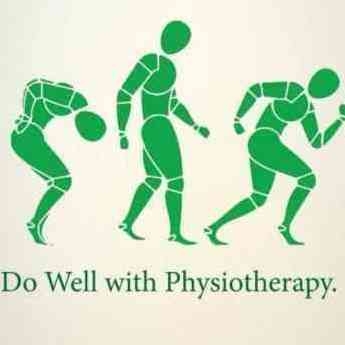+918042754929

This is your website preview.
Currently it only shows your basic business info. Start adding relevant business details such as description, images and products or services to gain your customers attention by using Boost 360 android app / iOS App / web portal.
What Is #Torticollis OR #Wry Neck? Torticollis...
What Is #Torticollis OR #Wry Neck? Torticollis (wry neck, or loxia) is one of a broader category of disorders that exhibit flexion, extension, or twisting of muscles of the neck beyond their normal position. The Latin definition of torticollis means "twisted neck." In torticollis, the neck tends to twist to one side, causing head tilt. This condition can be congenital (present at birth) or acquired. It can also be the result of damage to the neck muscles or blood supply. Wry neck sometimes goes away without treatment. However, there’s a chance of relapse. Chronic wry neck can cause debilitating pain and difficulty performing daily tasks. Fortunately, medications and therapies can relieve pain and stiffness. Surgery can also sometimes correct the condition. Treatment is most successful if it’s started early. This is especially true for children. #Types of torticollis #Temporary torticollis This type of wry neck usually disappears after one or two days. It can be due to: swollen lymph nodes an ear infection a cold an injury to your head and neck that causes swelling #Fixed torticollis Fixed torticollis is also called acute torticollis or permanent torticollis. It’s usually due to a problem with the muscular or bone structure. #Muscular torticollis This is the most common type of fixed torticollis. It results from scarring or tight muscles on one side of the neck. #Klippel-Feil syndrome This is a rare, congenital form of wry neck. It occurs when the bones in your baby’s neck form incorrectly, notably due to two neck vertebrae being fused together. Children born with this condition may have difficulty with hearing and vision. #Cervical dystonia This rare disorder is sometimes referred to as spasmodic torticollis. It causes neck muscles to contract in spasms. If you have cervical dystonia, your head twists or turns painfully to one side. It may also tilt forward or backward. Cervical dystonia sometimes goes away without treatment, but there’s a risk of recurrence. Cervical dystonia can happen to anyone. However, it’s most commonly diagnosed in people who are roughly ages 40 to 60. It also affects more women than men. #Signs and #Symptoms of Facet Wry Neck Pain – generally located in the middle or side of the neck that is affected. The onset of pain is sudden. The pain experienced does not extend beyond the shoulder joint. Loss of Movement – your neck is generally fixed in an abnormal position – most commonly flexed forward and rotated away from the side of pain. All movements aggravate the pain, as the joint is fixed and movement triggers irritation to the joint and thus pain. Muscle Spasm – this is a tightening of the associated neck muscles that further limit movement. #Wry Neck Treatment After your physiotherapist has assessed your neck and confirms which joint or joints are locked, they will utilise a range of low risk joint treatment techniques and soft tissue massage to normalise your facet joint function. While your wry neck joint can almost always be immediately unlocked, you will have some residual muscle spasm and swelling in the region due to the trauma. Think how a sprained ankle swells! Neck joints will also swell, but it won't be as visible. #How Long is Recovery? Most acute wry necks can be unlocked immediately. However the residual effects may last for up to one week. It is also important to normalise your neck muscle and joint function (eg strength and motion) to prevent a regular recurrence, which unfortunately commonly occurs if your neck injury is poorly rehabilitated. Facet Wry Neck #Treatment #Aims Confirm your diagnosis Unlock your locked facet joint: facet joint techniques Normalise joint range of motion: joint techniques Relax muscle spasm: massage, gentle stretches, acupuncture or dry needling Normalise your muscle length-tension ratio: massage, stretches and home exercises Check and normalise your deep neck and superficial muscle strength Ensure normal cervical posture and function. If need more specific advice, please consult your physiotherapist who has a special interest in acute wry neck rehabilitation.

